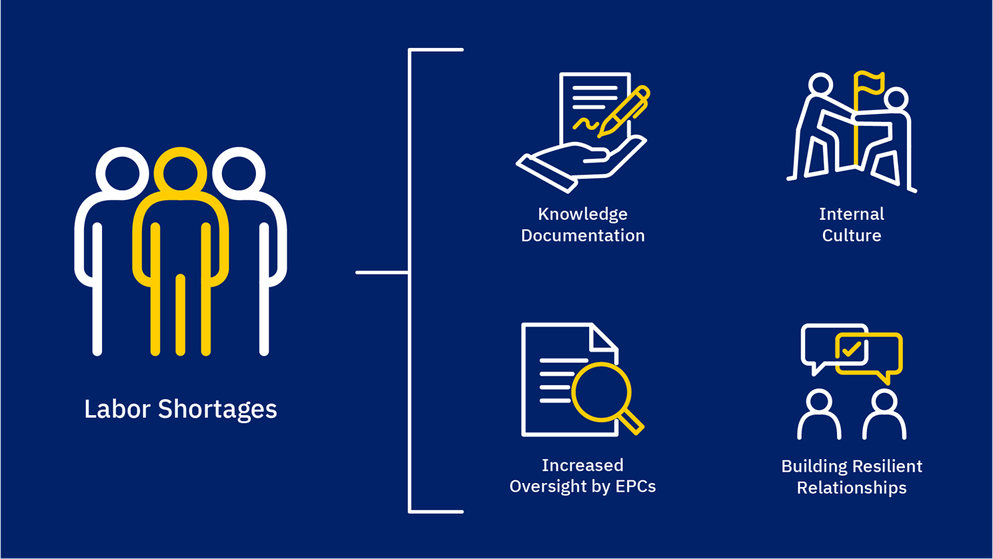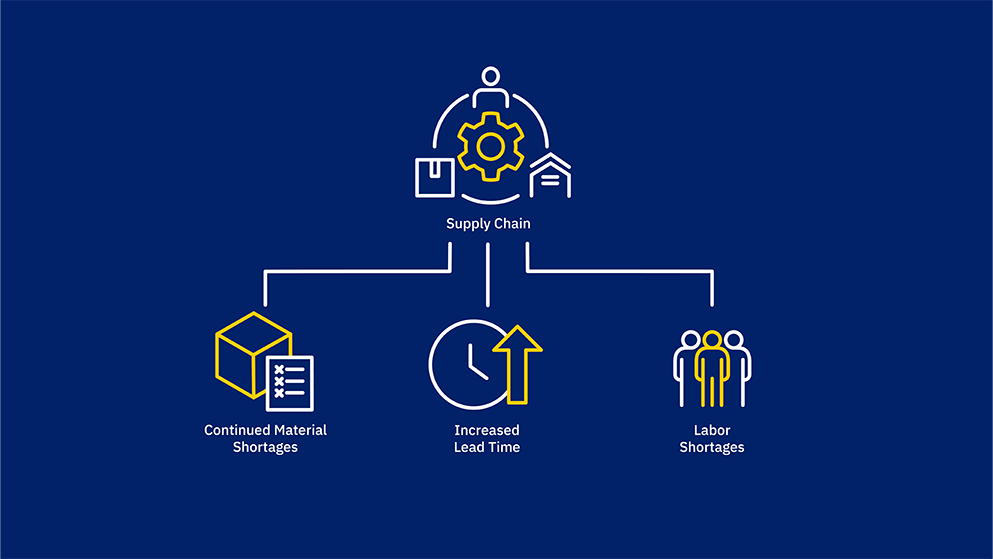The current labor market has dramatically transformed over the past five years, causing shifts in procurement that impact operational efficiency. These challenges span multiple industries, including chemicals, refining, midstream, oil and gas and beyond. The supply of seasoned professionals is smaller than it once was, leading to delays, increased costs and a strain on the entire procurement process.
As a go-to source for design-build EPC, S&B has continually adapted to the shifting procurement landscape, leveraging its deep expertise to turn these challenges into opportunities. Let’s explore the issue of labor shortages and discuss several key strategies that can be used to help navigate this changing market with a focus on cost and budget management.
What Changed?
The pandemic triggered a significant loss of talent, leading to a lack of valuable expertise, especially on the fabrication floor. In a study by Decartes, 37% of supply chain decision-makers cited a high to extreme shortage of labor.
These disruptions have manifested particularly in the fabrication and engineering sectors, leading to challenges that tend to lengthen lead times or impact overall costs. Seasoned professionals who had built up decades of experience engineering specialized materials are now absent, leaving a knowledge gap that has significantly impacted downstream schedules and quality assurance. Bridging this expertise gap remains a challenge that can impact both project timelines and budgets.
The lack of experienced labor has forced many companies to push work through a less experienced workforce, resulting in increased mistakes and schedule slippages. The market has yet to catch up with this gap in expertise, and while staffing up is necessary, the inexperience of new hires will remain a challenge for the foreseeable future.
Knowledge Documentation
Capturing the knowledge of experienced workers through documentation and standardized processes is critical to mitigate the loss of expertise. This applies to EPC partners, vendors and clients alike. By meticulously recording procedures, best practices and lessons learned, EPC firms and their vendors can create a rich repository of information that new hires and less experienced staff can rely on to successfully support your operations.
Beyond internal documentation, sharing knowledge across specialized vendors further enhances efficiency for your operation. Transparent communication and collaborative problem-solving help both teams work better and faster. This requires project directors to actively engage with vendors throughout the lifespan of a project, offering training and insights that expedite their learning curve and improve overall project outcomes.
Implementing robust knowledge management systems ensures that invaluable expertise is not lost, but that it is leveraged to refine and improve strategies over time. This approach bridges the experience gap and fosters a culture of continuous learning and innovation, and can also help control costs over time.
Internal Culture
Cultivating a collaborative culture that values employee contribution significantly increases engagement and efficiency. Investment in employee growth—through training programs, mentorship and career development opportunities—is vital to building this culture. Often, employees repay this investment with increased productivity and a deeper buy-in to the organization’s mission.
Identifying the right people for the job, especially those who align with the core values of your organization, is crucial. Refine your internal interview practices by focusing on questions that are directly relevant to the work at hand. This will help to match candidates' experience with your specific needs, narrowing your hiring pool to those who share in the core values of your collaborative culture. Additionally, utilizing employee referrals helps attract talent that already aligns with those values.
Creating a supportive and engaging workplace culture encourages employees to stay longer, reduces turnover and preserves institutional knowledge. This long-term commitment from employees translates into more efficient project execution and a more resilient supply chain, while helping to keep projects within budget.
Increased Oversight by EPCs
Building stronger vendor relationships through enhanced oversight can also mitigate the effects of labor shortages. Partnering with and bringing EPC managers with more experience into meetings (both internal and external) helps ensure smooth operations and shares important perspectives and knowledge.
Increased oversight also means a stronger focus on technical evaluations to assure better quality control. Create more checks and balances on project results to ensure that all materials meet required specifications and standards. By proactively addressing potential issues through thorough quality assessments, EPCs can maintain open lines of communication with internal and supplier teams, catching issues before they causeproject delays and cost overruns.
Enhanced oversight not only improves project quality and timelines, but it also conveys the importance of each step in the procurement process, fostering mutual respect and collaboration between every team involved in the supply chain with a particular project. This buy-in from all parties ensures that everyone is working toward the same goals, leading to more successful and cost-effective project outcomes.
Building Resilient Relationships
The challenges posed by labor shortages are significant, but not insurmountable. Effective preparation and strategic alignment can mitigate these issues, ensuring timely and within-budget project delivery. The key is establishing strong relationships with all stakeholders to bridge the experience gap on multiple levels of the supply chain at once.
At S&B, our expertise in building robust vendor relationships and adopting a collaborative internal culture positions us to overcome these challenges effectively. By prioritizing knowledge documentation, cultivating a supportive work environment, and enhancing oversight when needed, we navigate the complexities of labor shortages with agility and precision.
To learn how S&B’s strategies can drive successful outcomes for your next EPC project and help your organization overcome supply chain challenges while managing costs and budgets, connect with our experts.



